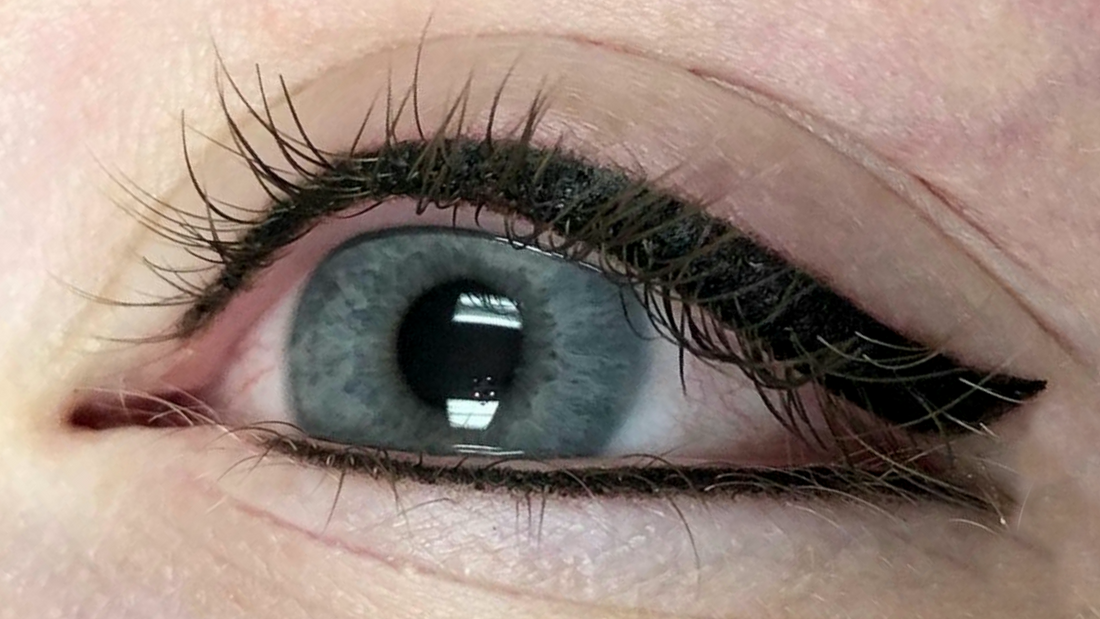
Carbon vs Iron Oxide: Should You Use Carbon Pigments for Eyeliner?
When it comes to eyeliner tattooing, choosing the right pigment isn't just about color — it’s about chemistry, longevity, safety, and most of all, your skill level. And when it comes to carbon-based pigments, you’ve probably heard the warning:
👉 "Newbies, stay away."
But do you really know why?

Why Carbon Pigments Are Riskier for Eyeliner Tattoos
Carbon black pigments are known for their ultra-rich, true black appearance. But they also come with serious responsibility. Why?
Because carbon black has the smallest particle size of all pigment types — which means it implants faster, travels easier, and stays longer. That combo makes it powerful and potentially problematic.
👉 Carbon requires less pressure to implant, and if you're heavy-handed or unsure of your depth, it can easily migrate.
Migration happens when pigment is placed too deep and spreads outside the intended area — and with carbon, that risk is much higher.
Never Use Carbon On:

🩷 Eyelids with visible blood vessels or capillaries
🩷 Wings and wedges (read that again 🔥)
Here’s why: If carbon pigment is implanted near or inside capillaries, the small particles can travel through the vessels, leading to discoloration or migration. That means you could end up with blue or gray lines far beyond where you placed the pigment.
As for wings and wedges? Even if your client is in love with their cat-eye now, tastes change. Carbon is harder to remove or soften over time, so Iron Oxide pigments are the safer long-game choice for dramatic shapes.
So... Who Can Use Carbon Pigments for Eyeliner?
Once you're a seasoned PMU artist — someone who’s confident in:
🩷 Depth control
🩷 Pressure management
🩷 Eyelid anatomy
🩷 Pigment chemistry
🩷 Needle and machine choice
…then, yes. You can introduce carbon into your eyeliner game.
Carbon black offers:
🩷 The highest lightfastness
🩷 UV durability
🩷 Long-lasting saturation
But here’s the caveat: Carbon’s staying power is a double-edged needle. 😉 Over time, it can leave a blue, gray, or gray-blue hue depending on:
🩷 The type of carbon used (there are hundreds!)
🩷 The pigment formula
🩷 The client's skin and undertones
Pro tip: Choose a truer black-based carbon, which fades softer and more gracefully — rather than turning that dreaded battleship gray. (You know the one.)

Our Verdict: Skip Carbon Until You’re Ready
If you're new to PMU or still mastering eyeliner, stick with high-quality Iron Oxide pigments. They’re more forgiving, safer on vascular lids, and age out more predictably.
Once you're skilled and experienced? Carbon can be your bestie — but only if you know exactly what you’re doing.
Want to Learn Eyeliner the Right Way?
Check out our PMU Eyeliner Courses at Girlz Ink Academy — where we teach you how to master pigment selection, technique, machine movement, and more.
Need pigment suggestions? Head over to the Girlz Ink Store and shop our curated selection of Iron Oxide and Carbon-based eyeliners — with pro support, always.

FAQ: Carbon Pigments for Eyeliner
Q: Can beginners ever use carbon safely?
A: Not recommended. Even "gentler" carbons carry higher migration risks — wait until you’re solid in depth and pressure control.
Q: Is carbon black better for dark-skinned clients?
A: It depends on skin thickness and undertone. Carbon may show up better, but migration risk still applies.
Q: How can I tell if a pigment is carbon-based?
A: Check the pigment ingredients or ask the manufacturer. At Girlz Ink, we always list pigment components to help you make safe choices.
Q: What do you recommend instead of carbon for eyeliner?
A: A rich, high-quality Iron Oxide with strong black tones — safe, buildable, and perfect for beginners.
Want more pigment truth bombs like this?
🎧 Don’t forget to listen to Tatter A Fact, our no-BS PMU podcast with Teryn Darling.